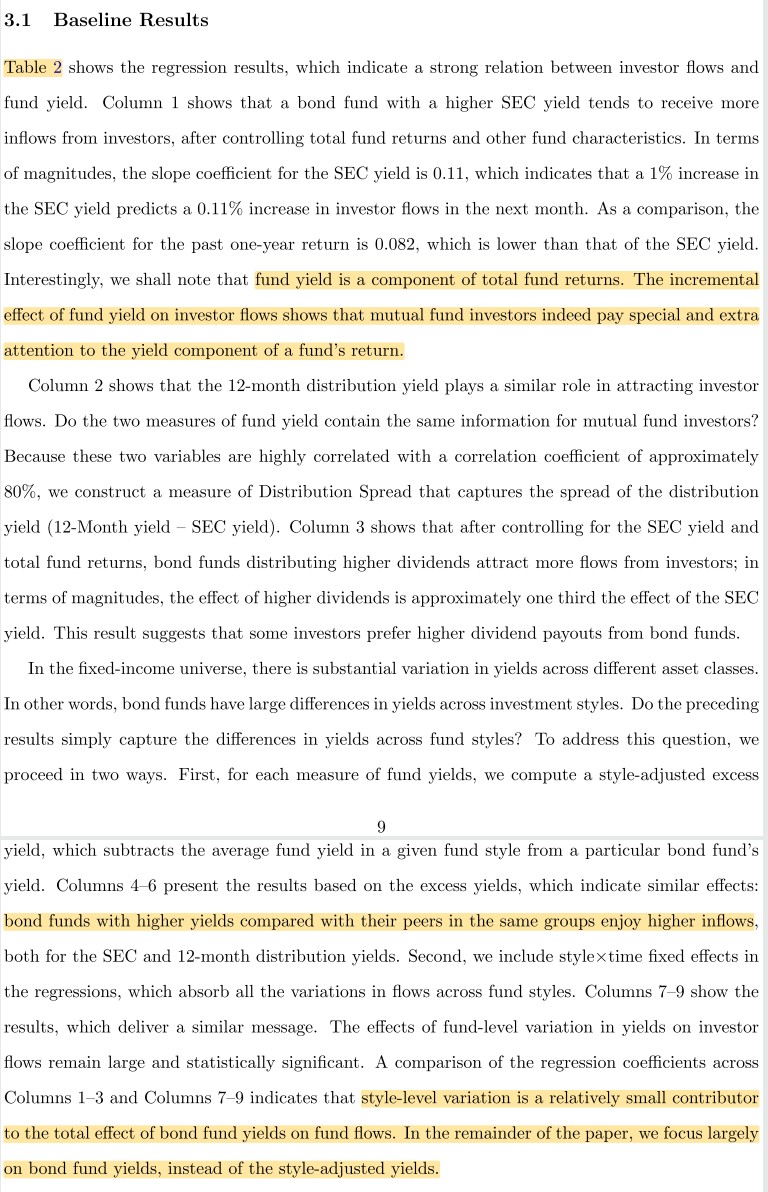
1/ Dividend policy, signaling, and discounts on closed-end funds (Johnson, Lin, Song)
"CEFs that adopt minimum-dividend policies experience reductions in discounts, trade at smaller discounts than other funds, and earn greater subsequent excess returns."
sciencedirect.com/science/articl…
"CEFs that adopt minimum-dividend policies experience reductions in discounts, trade at smaller discounts than other funds, and earn greater subsequent excess returns."
sciencedirect.com/science/articl…

2/ "Minimum-dividend policies are uncommon in bond CEFs, so we analyze equity CEFs.
"135 equity CEFs have data available some time during 1993-2001; 20% have minimum-dividend policies.
"We omit funds in their IPO year and ones that liquidate or open-end in the relevant years."

"135 equity CEFs have data available some time during 1993-2001; 20% have minimum-dividend policies.
"We omit funds in their IPO year and ones that liquidate or open-end in the relevant years."


3/ "Funds with minimum-dividend policies realize greater unrealized capital appreciation and greater NAV returns.
"Discounts range from –29.05% (negative value = premium) to 37.51% with a mean of 10.75%. 82% of the fund-years represent funds trading at a discount to NAV."

"Discounts range from –29.05% (negative value = premium) to 37.51% with a mean of 10.75%. 82% of the fund-years represent funds trading at a discount to NAV."


4/ "22 of the 24 funds with minimum-dividend commitments commit to a minimum dividend yield that exceeds their prior three-year average dividend yield. Thus, funds with strong (weak) minimum-dividend policies commit to significantly greater (smaller) increases in dividend yield." 

5/ "Only funds that adopt a strong minimum-dividend policy sustain discount reductions out to week +5.
"Results for strong-policy funds are consistent with predictions of dividend-signaling models (undervaluation falls after adoption of a potentially costly dividend policy)."

"Results for strong-policy funds are consistent with predictions of dividend-signaling models (undervaluation falls after adoption of a potentially costly dividend policy)."


6/ "The results for discount funds generally parallel the results from the overall sample, suggesting that strong minimum-dividend policies reduce discounts.
"The lack of differences in premiums among premium funds suggests that arbitrage cost effects do not drive our finding."

"The lack of differences in premiums among premium funds suggests that arbitrage cost effects do not drive our finding."


7/ "Results are robust to controlling for other potential determinants of discounts.
"The effect of a yield increase on discount is only significant when for a strong minimum-dividend policy.
"Funds with greater expense ratios and larger funds also trade at larger discounts."
"The effect of a yield increase on discount is only significant when for a strong minimum-dividend policy.
"Funds with greater expense ratios and larger funds also trade at larger discounts."

8/ "CEFs adopting minimum-div policies earn excess NAV returns indistinguishable from (greater than) matched funds before (after) adoption.
"Funds experiencing greater reductions in their discounts also earn larger excess NAV returns and have larger increases in excess returns."

"Funds experiencing greater reductions in their discounts also earn larger excess NAV returns and have larger increases in excess returns."


9/ "Results are consistent with arguments that managers of high-quality funds have incentives to signal their types and reduce their funds’ discounts to reduce the likelihood that they lose future income via takeover, liquidation, or other terminations." 

10/ "If, in aggregate, firms pay dividends for a variety of reasons but only a minority use dividends to signal, this could explain why prior empirical studies on broad cross-sections of firms generally find mixed or negative results for signaling theories." 

11/ Related research:
Strategic Timing in Closed-End Fund Portfolio Holdings Disclosure
Excess Volatility and Closed-End Funds
Exploiting Closed-End Fund Discounts: A Systematic Examination of Alphas
Strategic Timing in Closed-End Fund Portfolio Holdings Disclosure
https://twitter.com/ReformedTrader/status/1370801944827027458
Excess Volatility and Closed-End Funds
https://twitter.com/ReformedTrader/status/1373702041206353920
Exploiting Closed-End Fund Discounts: A Systematic Examination of Alphas
https://twitter.com/ReformedTrader/status/1354923117898960896
• • •
Missing some Tweet in this thread? You can try to
force a refresh




























